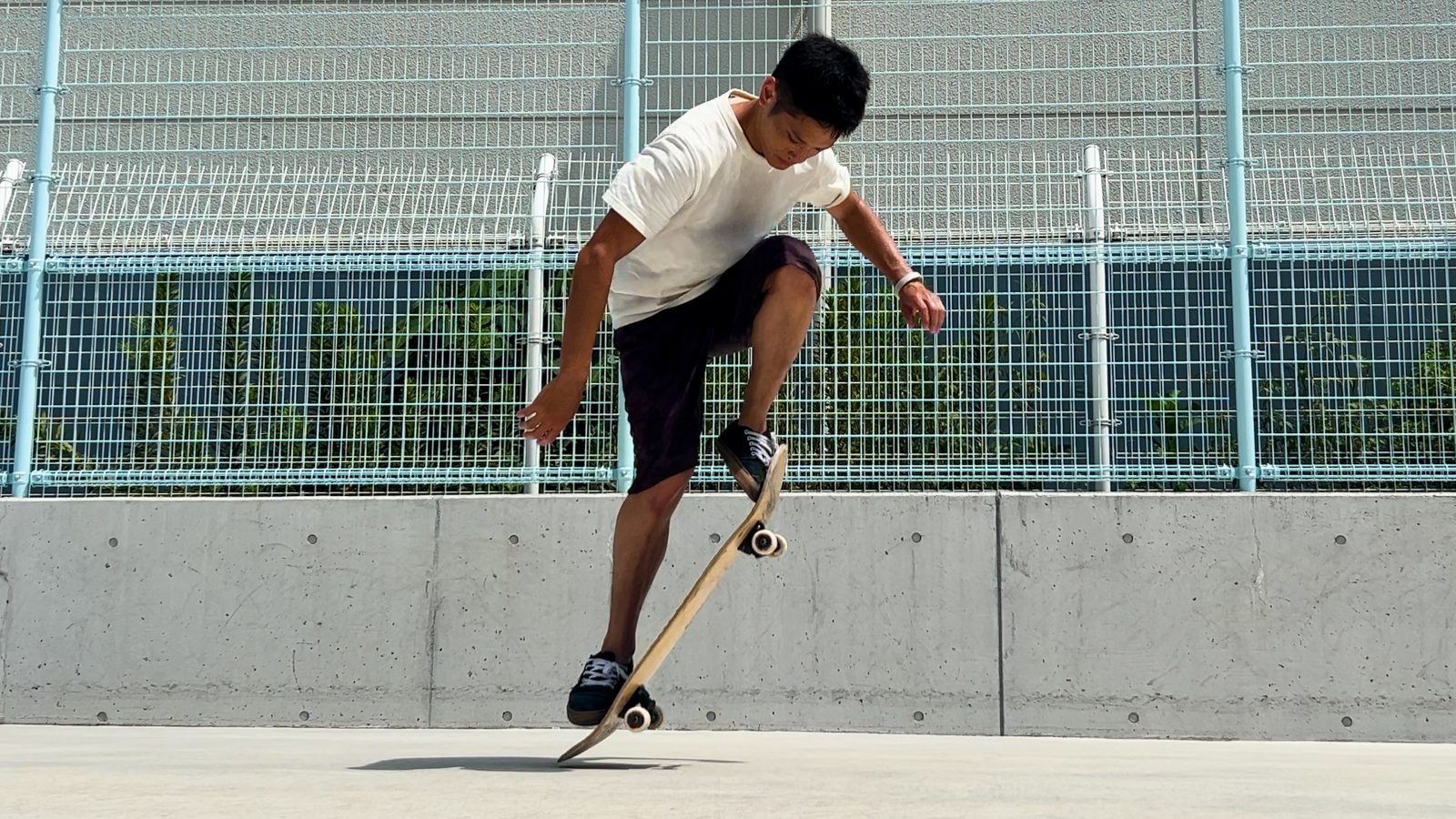The reason why your Ollie doesn't get high lies in the principle of the seesaw. The force to pop the tail may angle the board, but it does not move the center of gravity. When you jump on the ground, your center of gravity is between your feet. The same is true when jumping on a seesaw. So, the same should be said on a skateboard, right? Meaning, trying to lift your body weight by popping is wrong. This time, let's scientifically analyze what jumping on a skateboard is and the role of the pop.
Summary
Popping the tail does not lift your body; center of gravity must be lifted separately.
Simply snapping the tail of the skateboard only tilts the board—it doesn't move your center of gravity upward. To actually jump higher, you must lift your body weight using both feet in coordination. This follows basic physics: you push the ground, the ground pushes back. The pop alone won’t do the job.
The wheels, not the tail, transfer body weight force to the ground.
During an Ollie, your weight is transmitted through the wheels, not the tail. Pressing only the tail doesn't result in upward force—it just pivots the board like a seesaw. Proper technique involves pushing down with both feet so that the board compresses against the ground and returns that force upward to lift your body.
Kinetic chain and timing are key to generating upward force effectively.
Maximum force is generated when the entire body—legs, thighs, back—extends in one smooth, timed motion. This concept, known as the kinetic chain, amplifies your jump. If you pop too early, before fully extending, your Ollie will lack height. Timing your pop with full extension is crucial for efficiency and height.
Why can we jump in the first place? When you kick down your feet, the ground pushes back against them, and that force lifts your center of gravity. For example, if you are floating in space, no matter how hard you push your feet, you cannot jump. This is because there is nothing that pushes back against you.
The greater the force you apply to the ground, the greater the force the ground pushes back against your feet. While this means you can jump higher by applying a greater downward force, it does not translate to you being able to Ollie higher by popping harder due to the following factors.
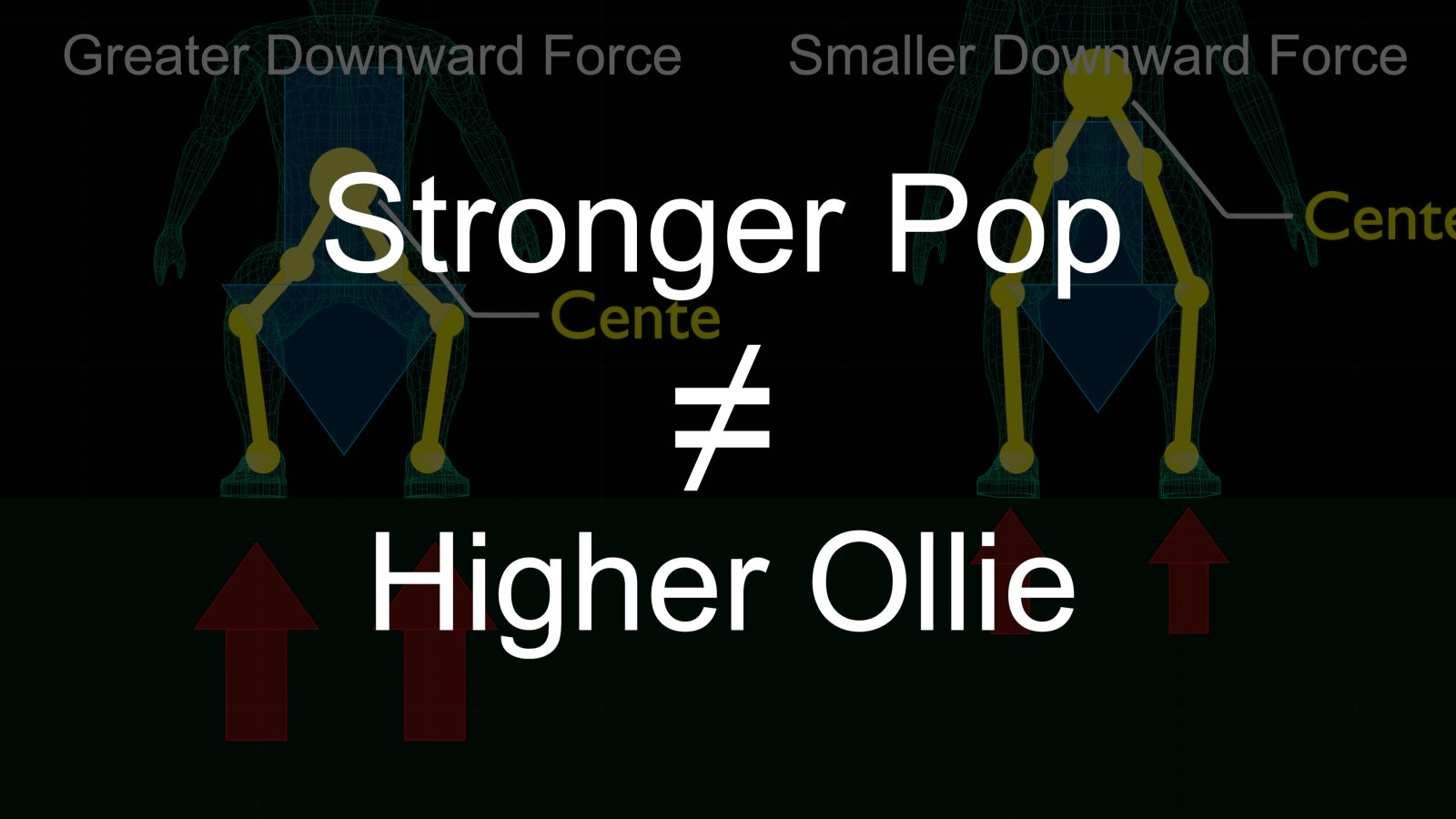
1. When standing on the ground, the force you apply to your feet transfers to the ground immediately. But on a skateboard, depending on how you push down, the downward force may not reach the ground effectively.
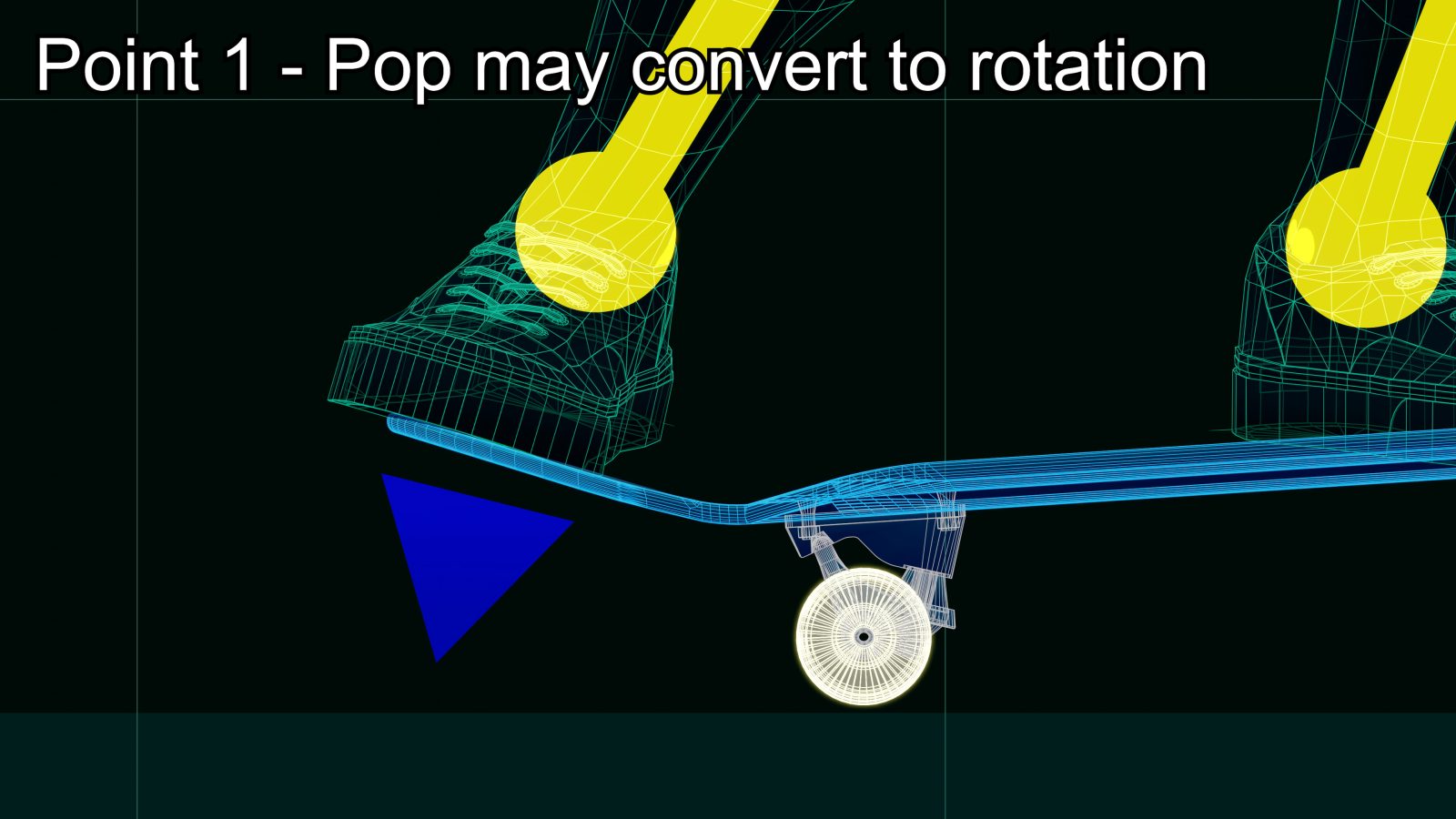
2. In Skateboarding, it is the wheels, not the tail, that transmit the force of the body weight pushing down on the ground.
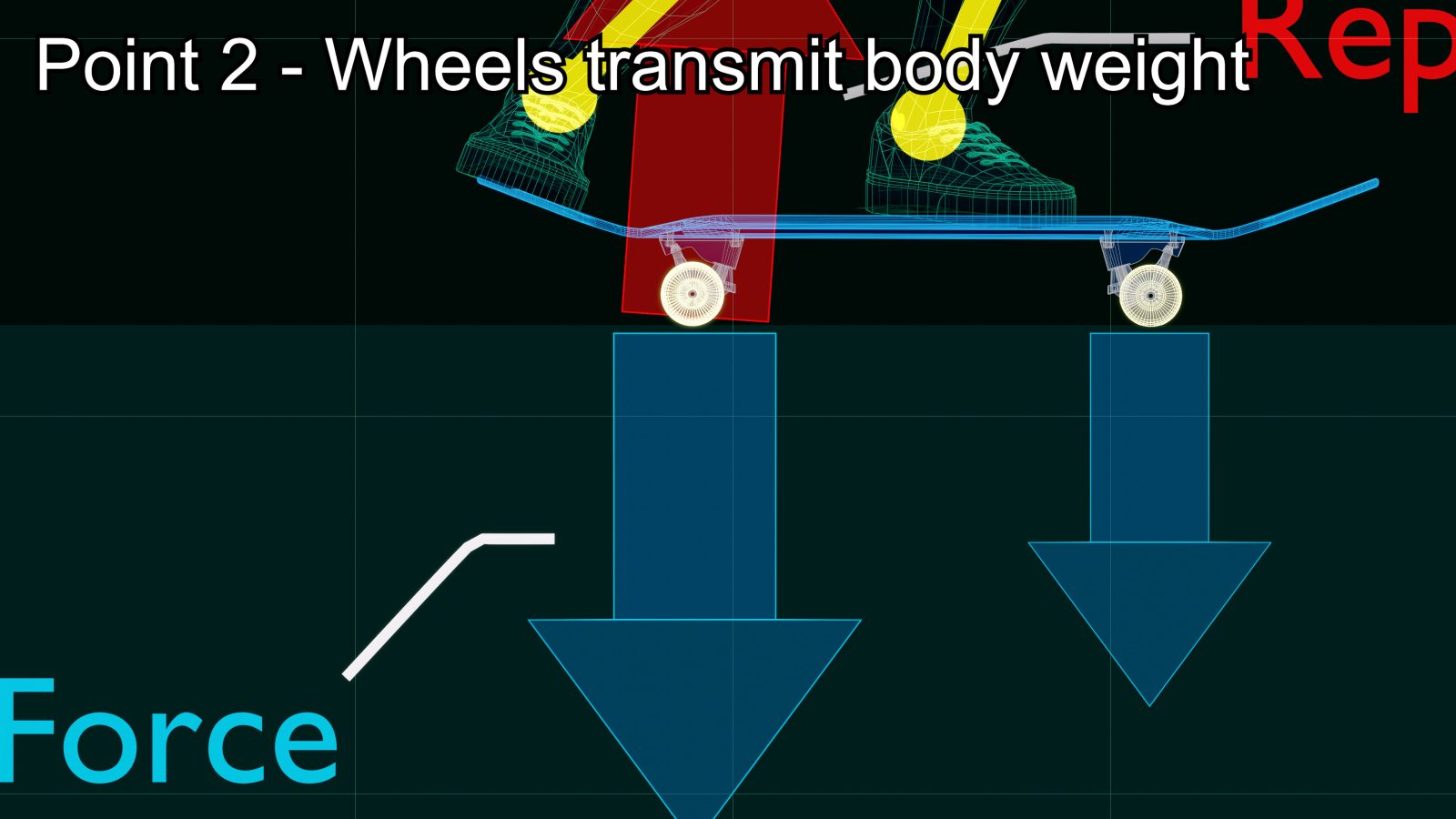
Let's consider the first point using an example of a seesaw. When you press one foot down on a seesaw, its plank rotates in that direction, and the opposite side lifts, while the center of gravity remains at the same position.
When you stand on the ground with one foot, you can lift your body weight by simply pushing down on your foot, as your center of gravity, foot, and the ground vertically align. It's just "Action-Reaction." You push, you get pushed back.
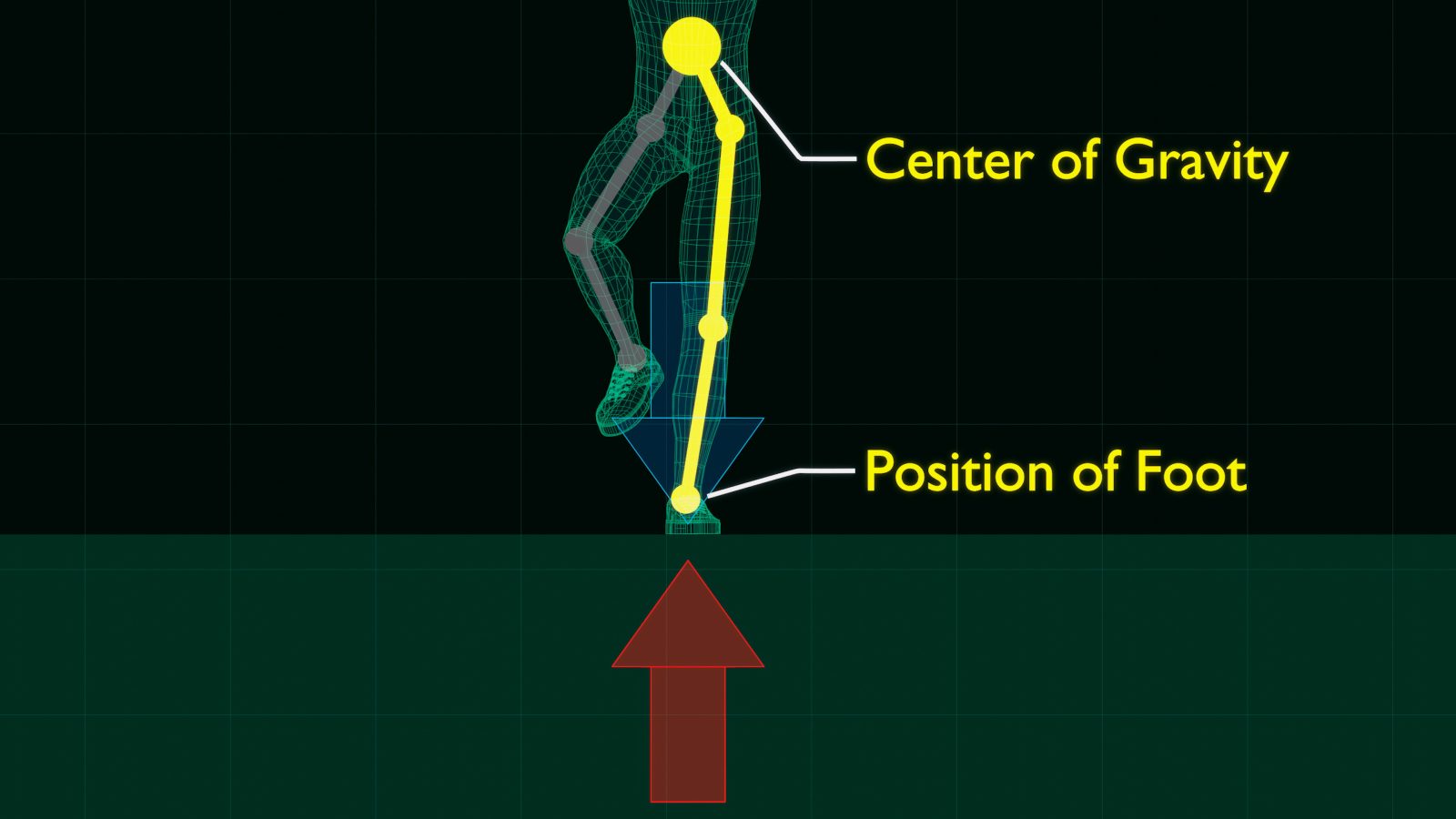
But on a seesaw, since your body's center of gravity and foot do not align vertically, the plank will only rotate, no matter how strongly you push down on the foot. In order to jump, you must apply a downward force to the support and receive an upward repulsion from the ground. To do so, you need to use both feet with equal force to push down on the plank, not just by pressing down on the back foot. Only then does the rebound force from the ground transfer to both feet, allowing you to lift your body weight.
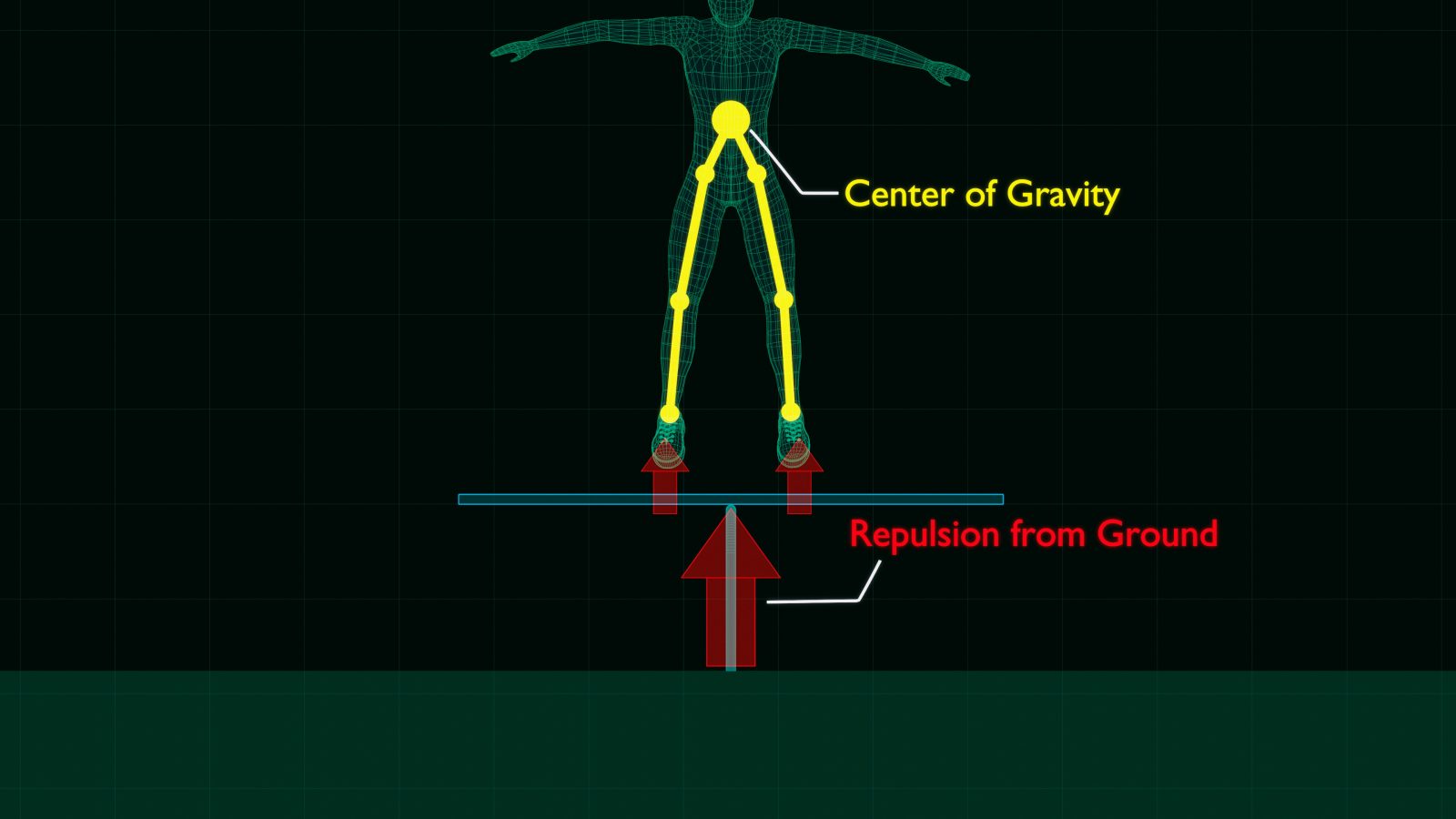
Does it really happen in an Ollie? Let's examine how the weight is transferred during the trick. As you squat down from a standing position, the force of the downward acceleration generated by the body is distributed almost evenly between the front and rear wheels.
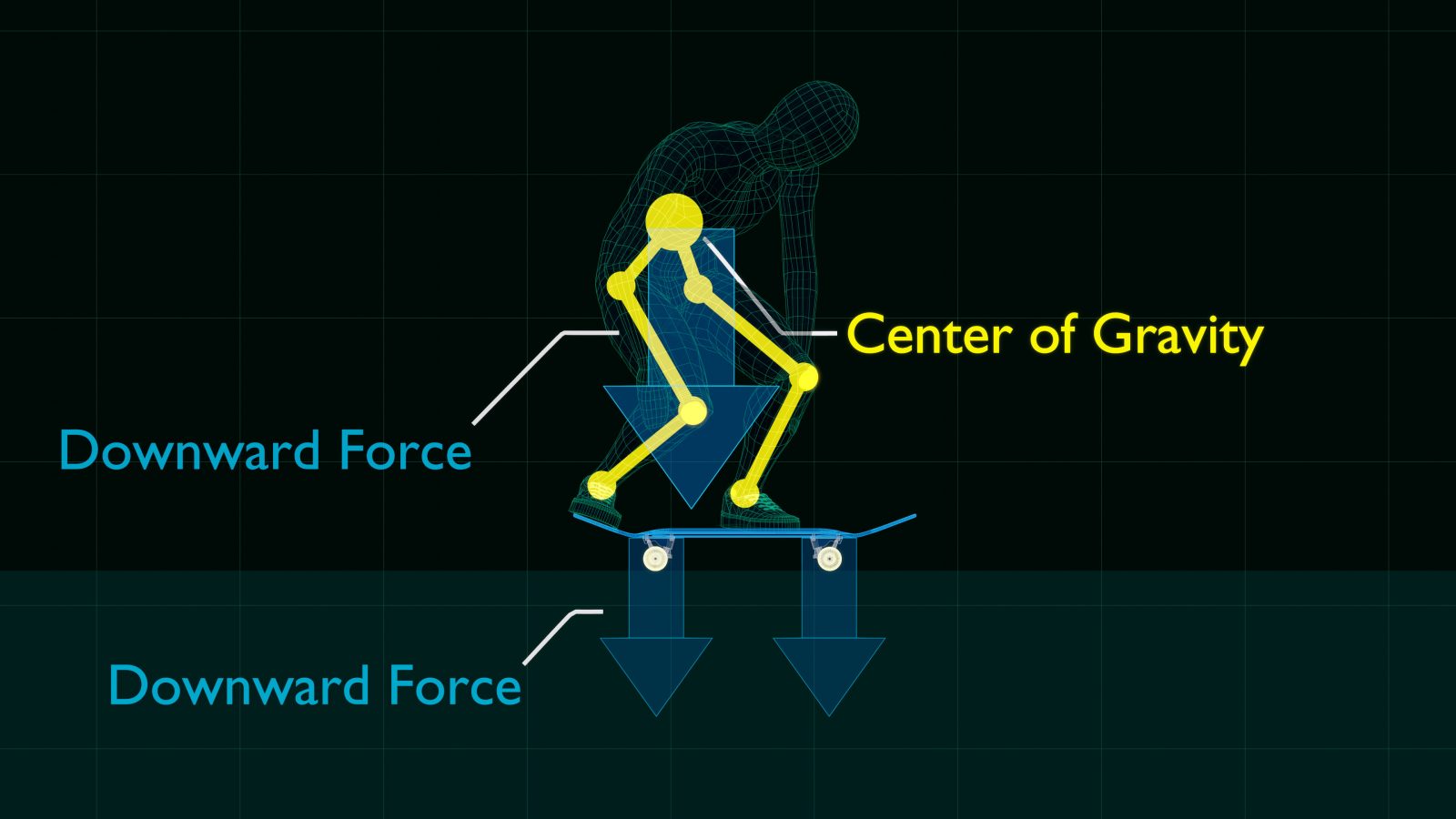
As you lift your body, the force exerted by both feet pushing down on the board is transmitted to the rear wheels. Just like a seesaw, if you push down on the board with only one foot at this point, the energy needed to lift your center of gravity will be converted into rotational force.
Trying to pop without receiving repulsion from the ground is like rotating the seesaw. Pushing down on the board with both feet to receive repulsion from the ground is like jumping on a seesaw. This is why you need to push down on the board with both feet. You can clearly tell which one allows you to Ollie higher, and the height of your Ollie does not translate to how hard you pop.
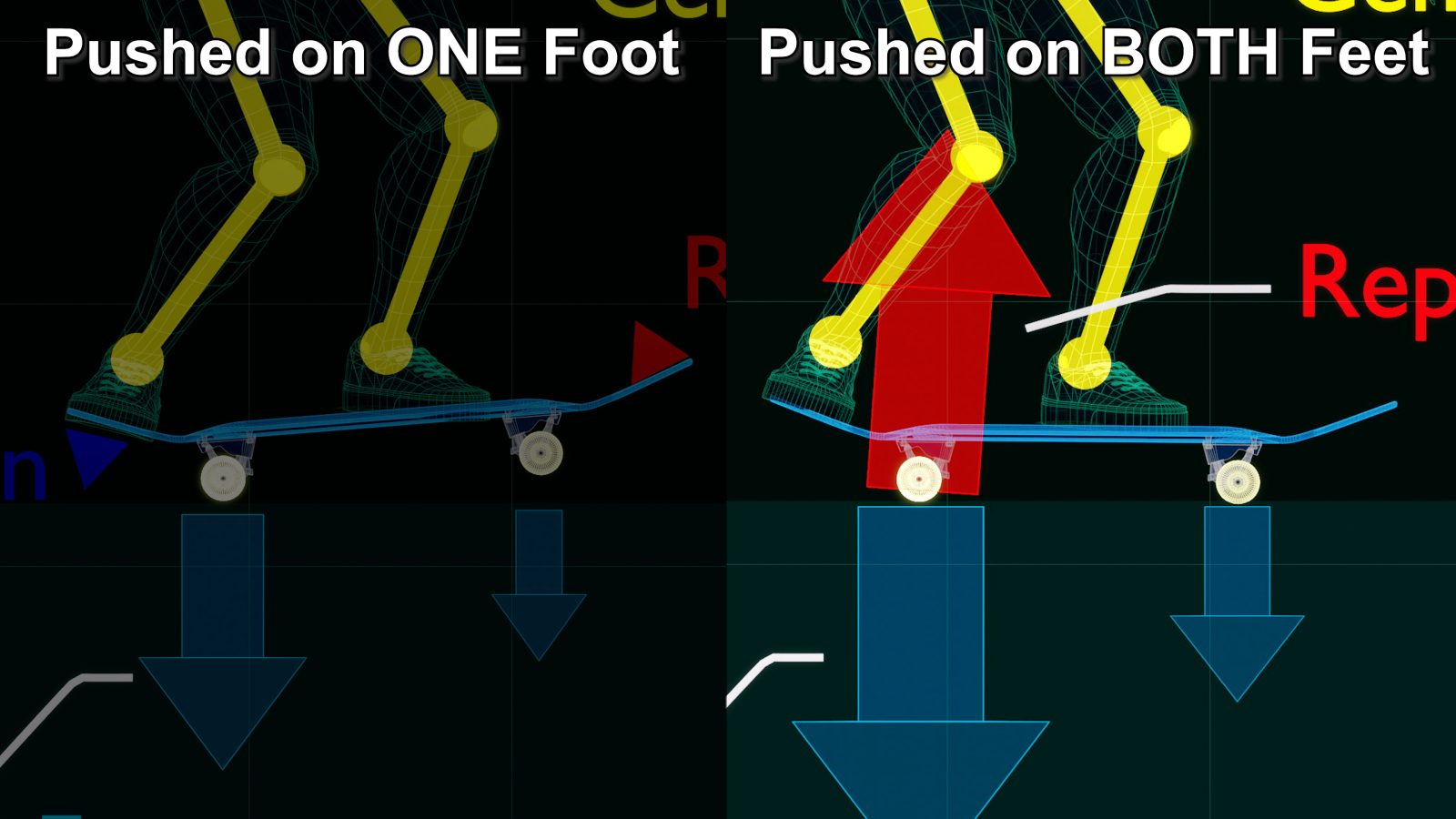
One thing to keep in mind is that if you put too much weight on your back foot, you'll end up doing a manual. Additionally, if you shift your weight over your back foot while extending your body, you'll end up shooting the board forward. The ideal is to be able to move your center of gravity vertically up and down between your feet.
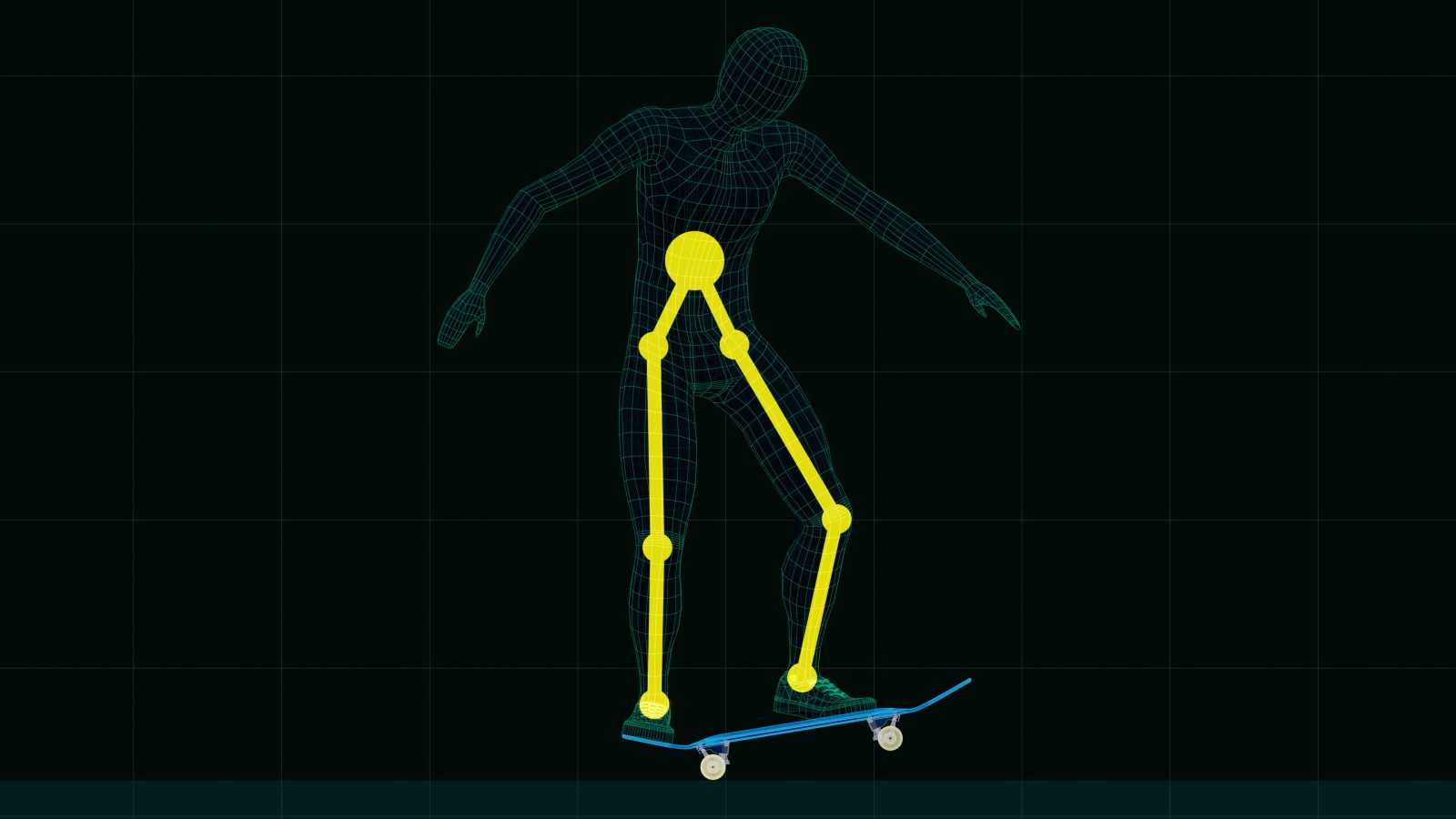
Remember the second point here: it is the wheels, not the tail, that transfer your weight to the ground. The force applied by both feet to push down on the board is transmitted to the ground through the wheels. The repulsion from the ground pushes back against both feet, lifting the center of gravity.
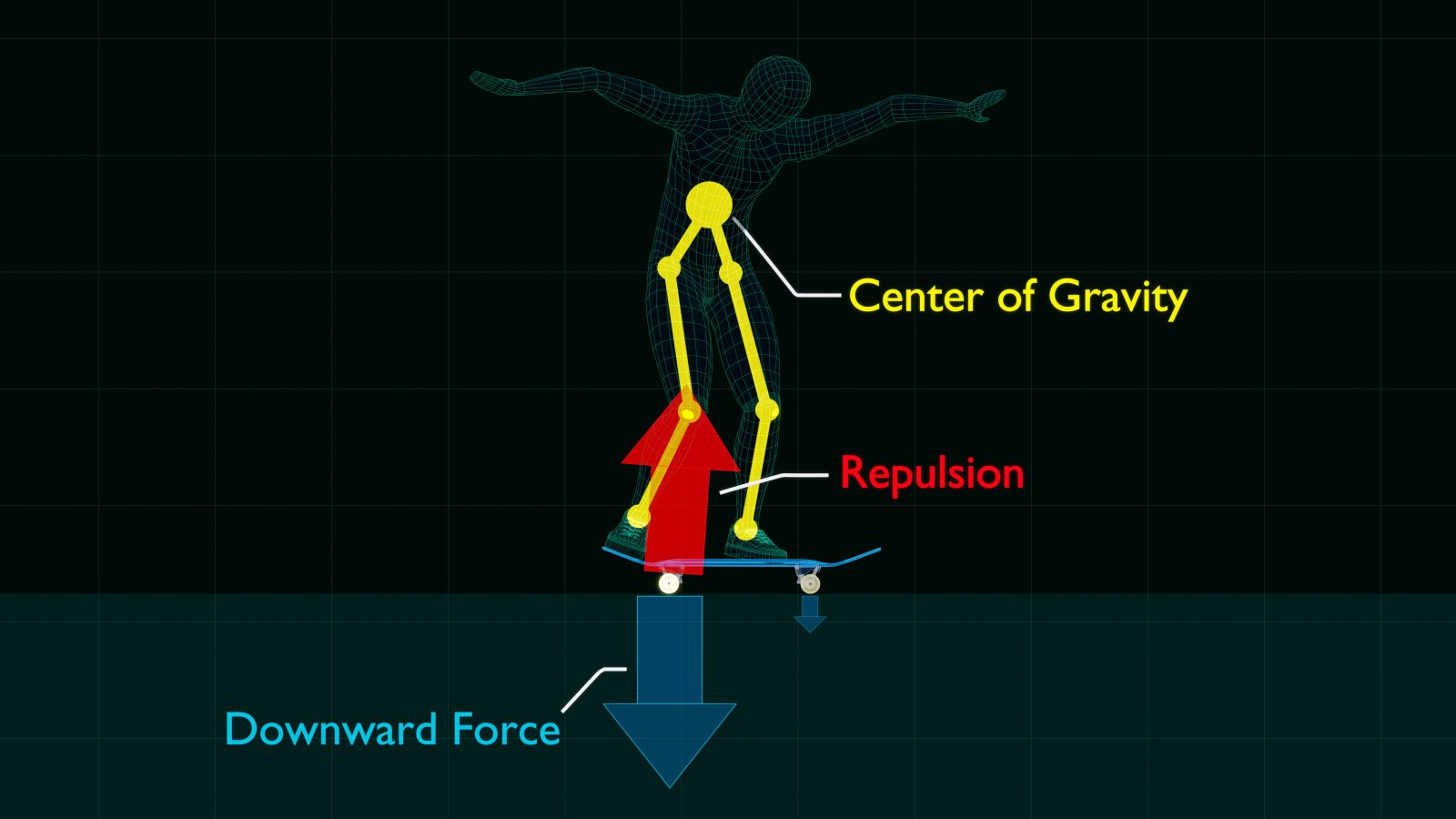
The primary role of the tail is to act as a pivot point, allowing the board to raise its angle. No matter how hard you pop, the board will not rise much, and your weight will not rise due to the force of the board rising. Suppose the board hits you, you will not move at all, right? The mass of a board that is too light to move your weight. Once again, the tail does NOT transfer your weight to the ground; it is the role of the wheels.
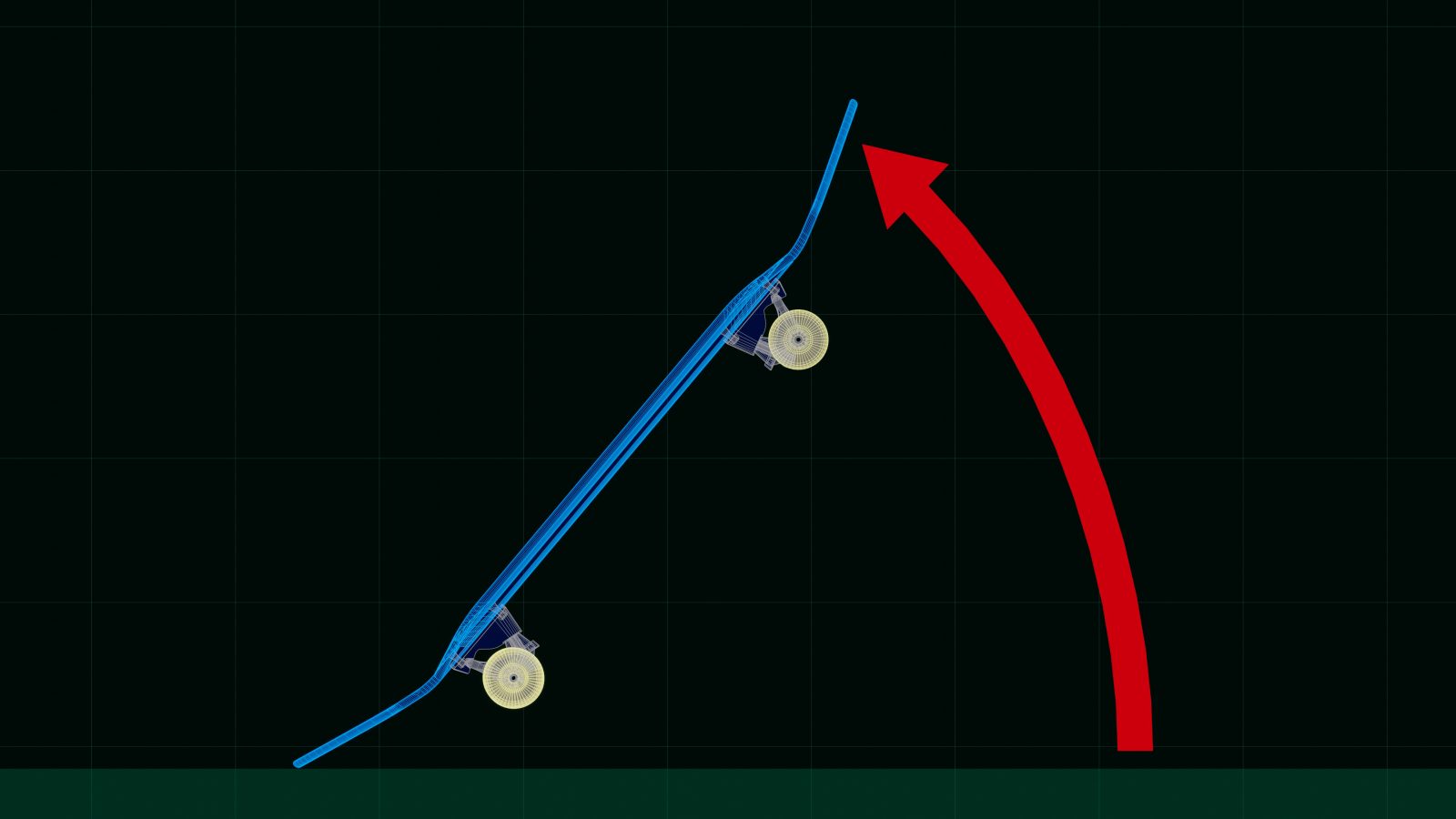
To get accustomed to the sensation of lifting your body weight, practice hippy jumps in an Ollie stance. This is not just a simple hippy jump. In a regular hippy jump, feet are often placed on the bolts, so the force of both feet pushing down on the board is directly transmitted to the ground, which does not happen in an actual Ollie. Instead, you must get used to the feeling of pushing down on the ground through the rear wheels.
What's important is to reduce the pressure that your body weight is putting on your board. You can tell you are doing it right if the front wheels leave the ground slightly and if you can do an instantaneous manual.
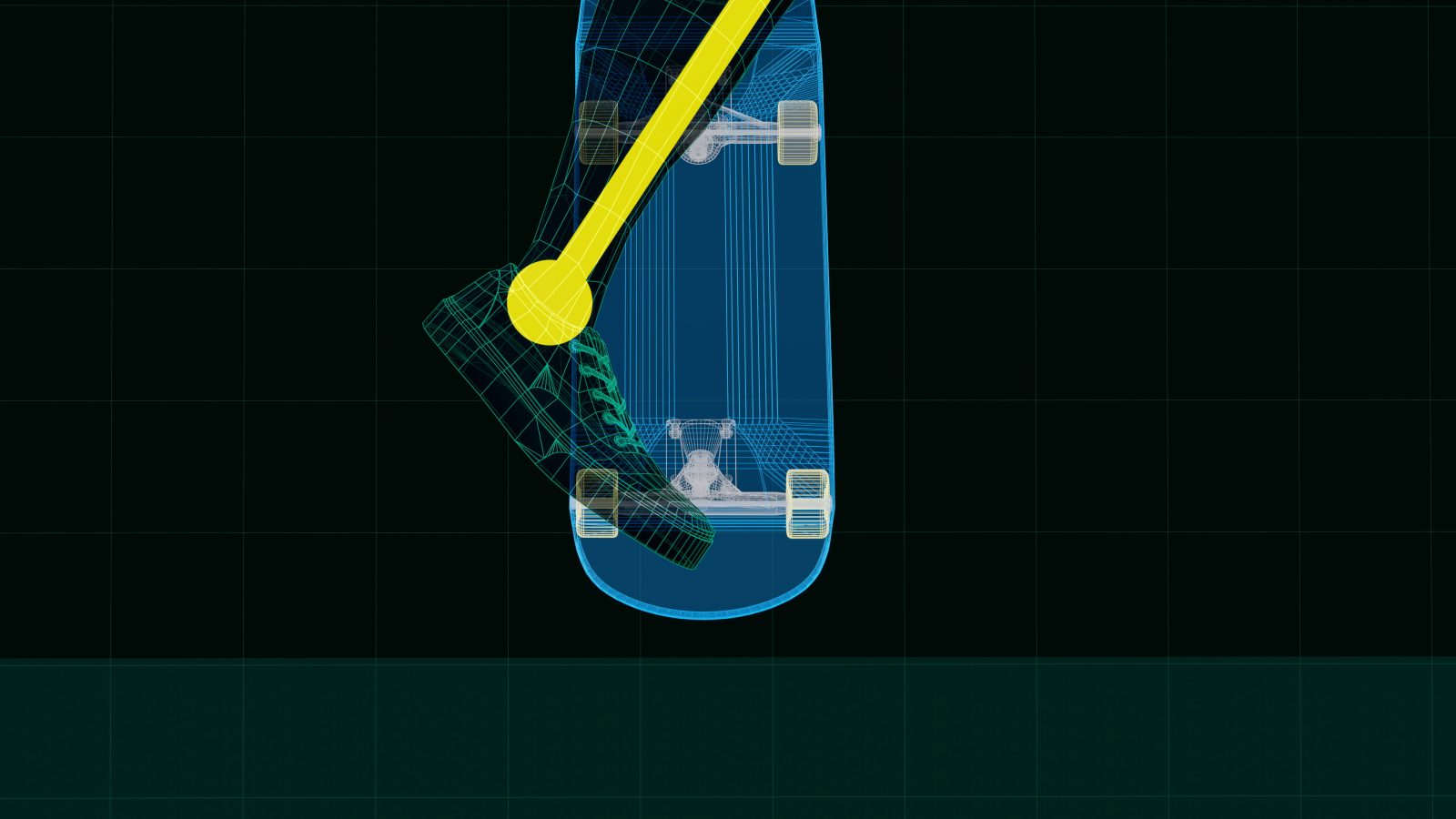
Finally, let's consider the motion of popping. It is often said that you need to snap your ankle, but that alone is not enough. The calf muscle is generally too small to lift the entire body weight. While the body weight is pressing down on the board, the board will not rise, no matter how hard you pop. Practice lifting your body weight as mentioned earlier, and extend your body, thigh, and leg in a straight line. Known as the kinetic chain, the body can generate its maximum strength by coordinating the force of different muscles to work together in the same direction.
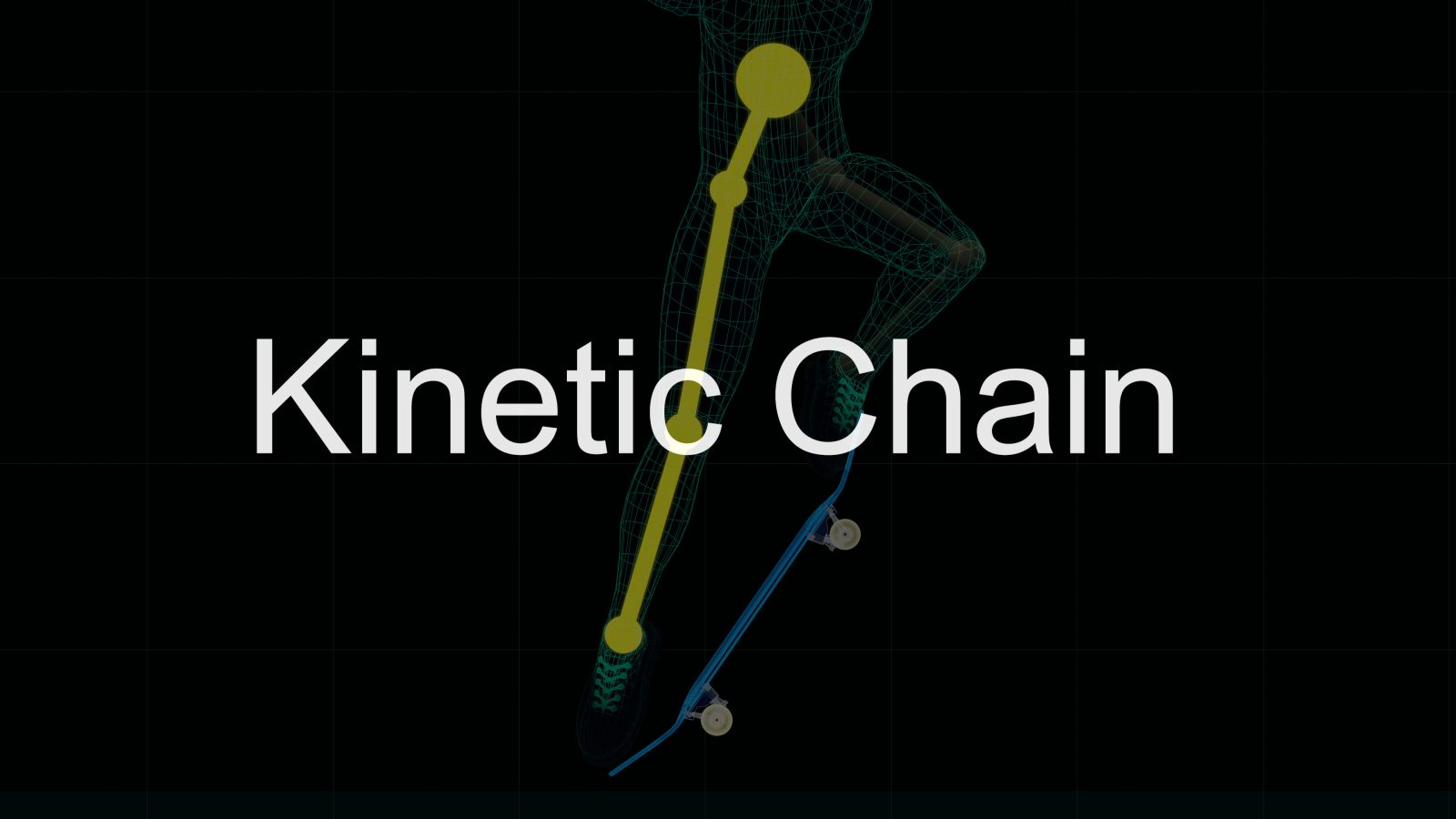
Timing is crucial. Record your Ollie, and if you're popping when your knees or body are still bent, it means you're popping too early.
